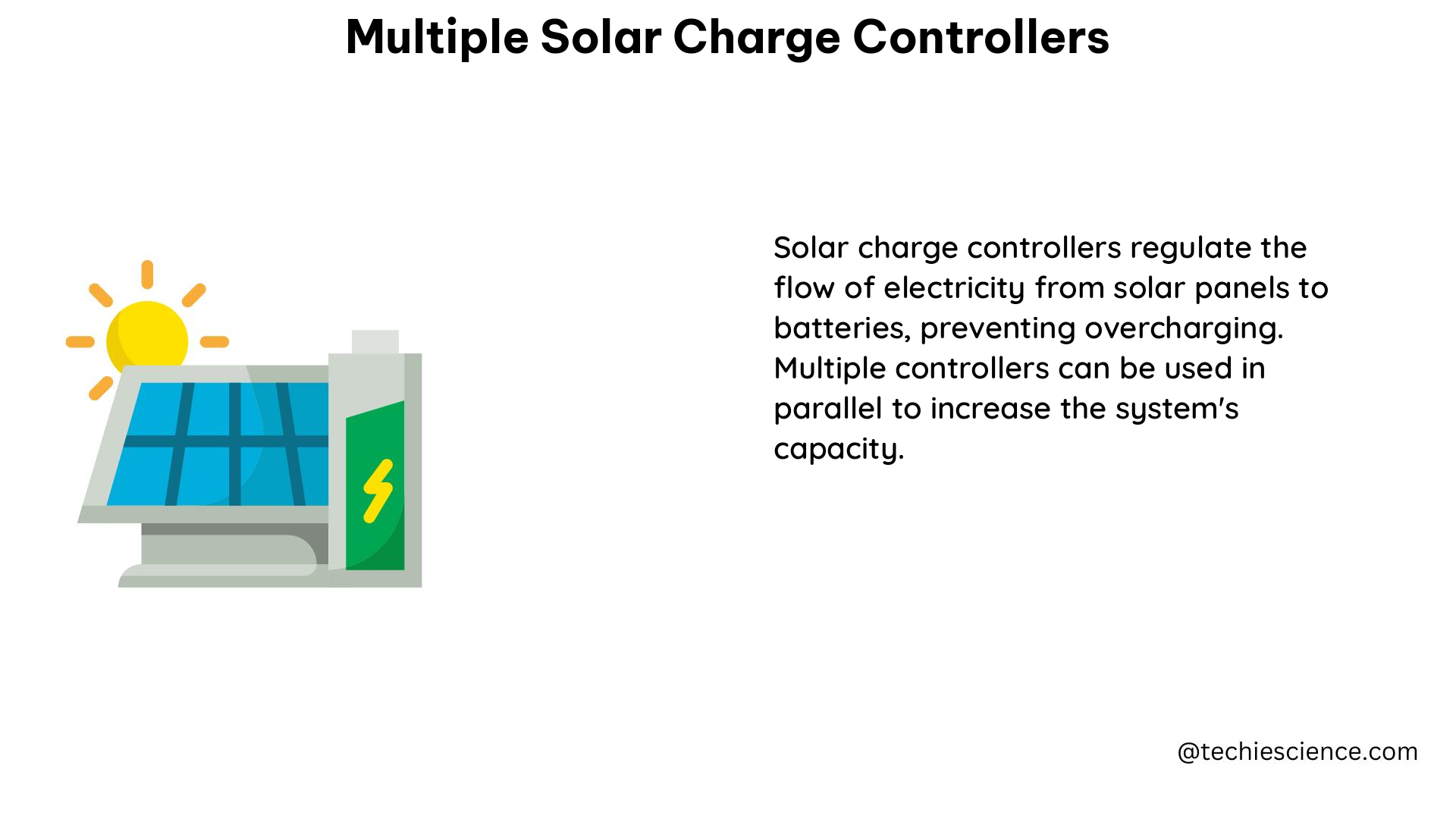When it comes to setting up a solar power system, one of the most critical components is the solar charge controller. This device is responsible for regulating the flow of electricity from the solar panels to the battery bank, ensuring that the batteries are charged efficiently and safely. However, in some cases, a single charge controller may not be enough to handle the power output of a large solar array. In such scenarios, using multiple solar charge controllers becomes a necessity.
Understanding the Need for Multiple Solar Charge Controllers
The number of solar charge controllers required in a system depends on the size of the solar array and the capacity of each individual charge controller. As a general rule, if the total power output of the solar array exceeds the maximum input capacity of a single charge controller, you’ll need to use multiple controllers to handle the load.
For example, let’s say you have a 1kW solar array and each charge controller can handle up to 400W. In this case, you would need at least three charge controllers to manage the entire solar array effectively.
Choosing the Right Solar Charge Controllers

When selecting solar charge controllers for a multi-controller setup, there are several key factors to consider:
-
Maximum Power Point Tracking (MPPT): MPPT charge controllers are more efficient than pulse-width modulation (PWM) controllers, as they can track the maximum power point of the solar panels more accurately. This can increase the overall efficiency of the system by up to 30%.
-
Voltage and Current Ratings: Each charge controller has a specific voltage and current rating that determines the size of the solar array it can handle. Make sure to choose controllers with ratings that match the requirements of your solar array.
-
Battery Voltage: The charge controllers must be compatible with the battery voltage of your system, which is typically 12V, 24V, or 48V.
-
Charging Algorithms: Different charge controllers use various charging algorithms to optimize the battery charging process. Common algorithms include three-stage, four-stage, and five-stage charging.
-
Communication Protocols: Some charge controllers support communication protocols like Bluetooth, Wi-Fi, or Modbus, allowing you to monitor and control the system remotely.
-
Protection Features: Look for charge controllers with built-in protection features, such as overvoltage protection, undervoltage protection, overcurrent protection, and short-circuit protection.
-
Efficiency: The efficiency of a charge controller is a measure of how much of the solar panel’s power it can convert into usable energy for the batteries. Aim for controllers with high efficiency, typically ranging from 90% to 98%.
Wiring Multiple Solar Charge Controllers
When connecting multiple solar charge controllers to a single battery bank, there are a few important considerations:
-
Parallel Connection: The solar panels should be connected in parallel to each charge controller, ensuring that each controller receives the same voltage and current input.
-
Battery Bank Connection: The battery bank should be connected in parallel to the outputs of all the charge controllers, allowing the batteries to be charged simultaneously.
-
Synchronization: It’s essential to ensure that the charge controllers are synchronized, so they don’t compete with each other and cause issues with the battery charging process. Some charge controllers have built-in synchronization features, while others may require manual adjustments.
-
Load Distribution: If the solar array is divided into multiple sub-arrays, each with its own charge controller, it’s important to ensure that the load is evenly distributed across the controllers to prevent any single controller from becoming overloaded.
-
Monitoring and Control: Consider using charge controllers with communication protocols, such as Bluetooth or Wi-Fi, to monitor and control the system remotely. This can help you identify and address any issues that may arise.
Technical Specifications of Popular Solar Charge Controllers
Here are some detailed technical specifications for popular solar charge controllers that can be used in a multi-controller setup:
- Victron SmartSolar MPPT 100/50:
- Maximum power point tracking
- Voltage range: 12V/24V/48V
- Current rating: 50A
- Efficiency: 98%
- Bluetooth communication
- Three-stage charging algorithm
-
Overvoltage protection, undervoltage protection, overcurrent protection, and short-circuit protection
-
Renogy Rover 60 Amp MPPT Solar Charge Controller:
- Maximum power point tracking
- Voltage range: 12V/24V/48V
- Current rating: 60A
- Efficiency: 98%
- LCD display
- Four-stage charging algorithm
-
Overvoltage protection, undervoltage protection, overcurrent protection, and short-circuit protection
-
EPEVER MPPT Solar Charge Controller 40A 12V/24V/48V:
- Maximum power point tracking
- Voltage range: 12V/24V/48V
- Current rating: 40A
- Efficiency: 97%
- LCD display
- Five-stage charging algorithm
- Overvoltage protection, undervoltage protection, overcurrent protection, and short-circuit protection
Remember, when using multiple solar charge controllers, it’s essential to carefully plan and design the system to ensure optimal performance, efficiency, and safety.
References:
1. How to Wire Multiple Solar Charge Controllers into a DIY System – YouTube
2. Multiple charge controllers on the same solar panel – Electronics Stack Exchange
3. Can I run two solar charge controllers to one battery bank? – Reddit
4. Can I use 2 Solar controllers in the same system? – VictronEnergy
5. Using multiple charge controllers – DIY Solar Power Forum

The lambdageeks.com Core SME Team is a group of experienced subject matter experts from diverse scientific and technical fields including Physics, Chemistry, Technology,Electronics & Electrical Engineering, Automotive, Mechanical Engineering. Our team collaborates to create high-quality, well-researched articles on a wide range of science and technology topics for the lambdageeks.com website.
All Our Senior SME are having more than 7 Years of experience in the respective fields . They are either Working Industry Professionals or assocaited With different Universities. Refer Our Authors Page to get to know About our Core SMEs.